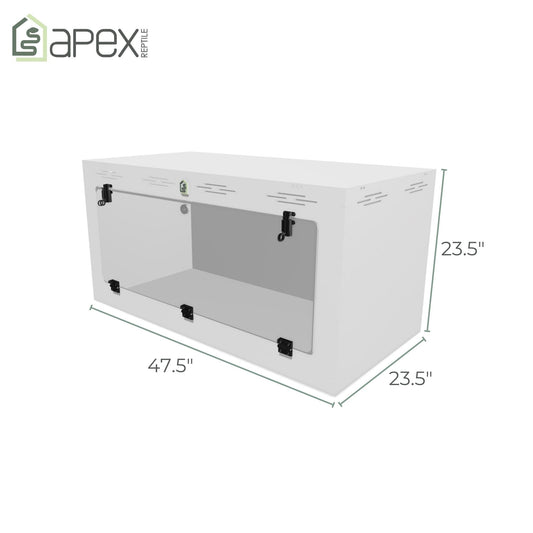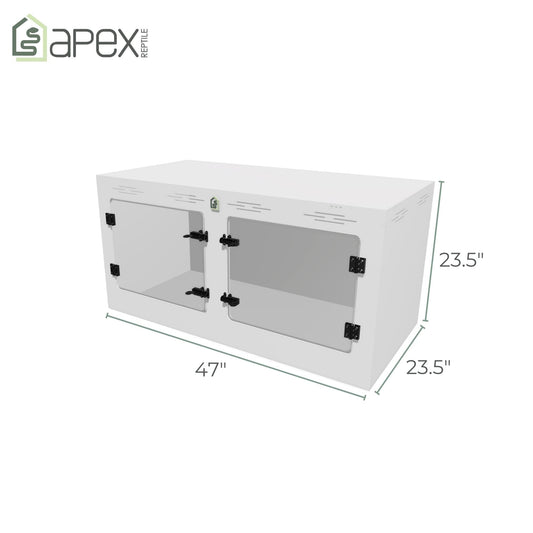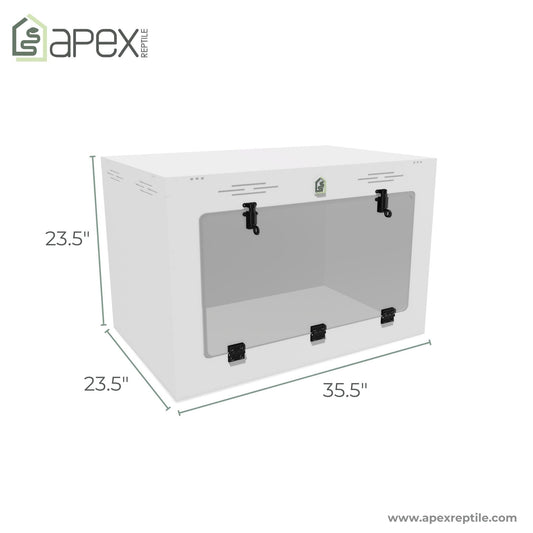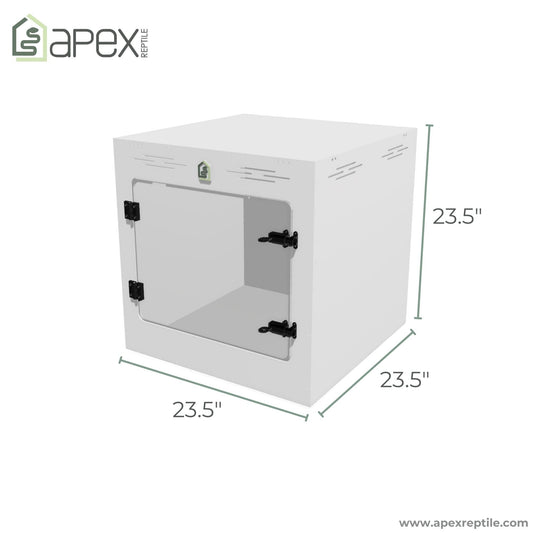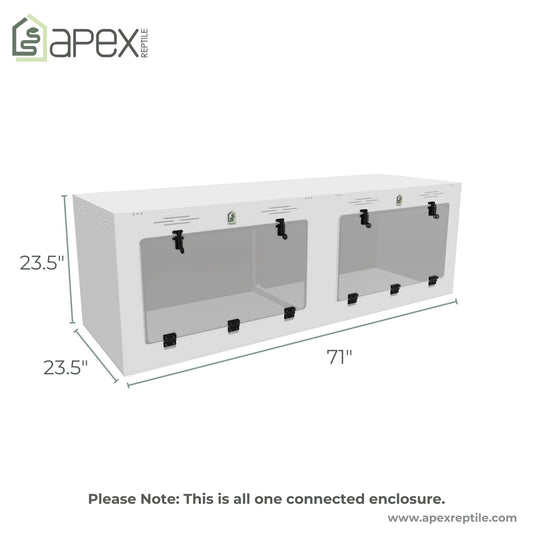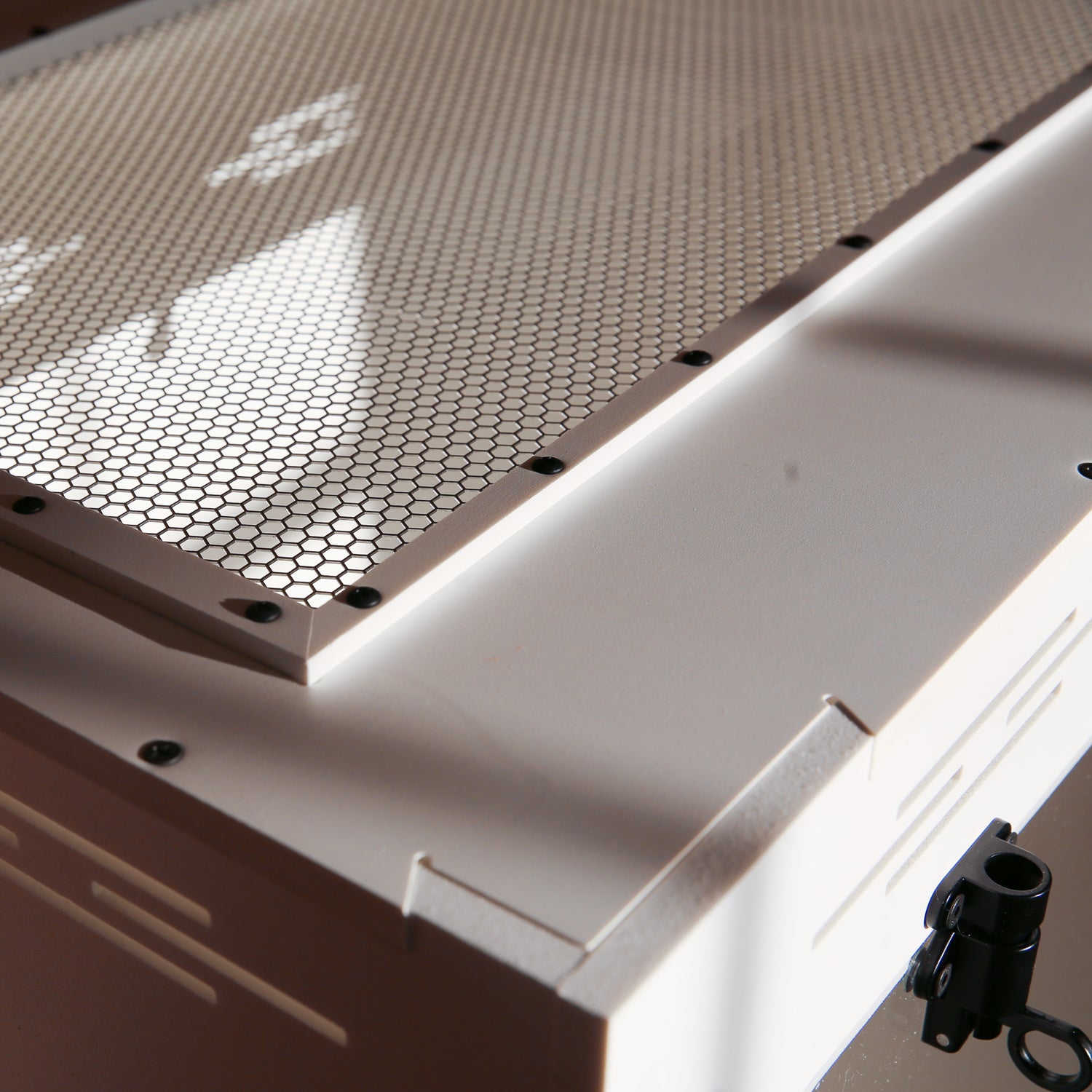
Heat & Light Set-Up
Whether you're a new or experienced reptile parent, this page is your go-to guide for the best tips on setting up heat and light fixtures in PVC enclosures with both solid and screen top lid styles.
Solid Top Heating & Lighting
With a solid top, you can enjoy a clean external look and finish, but make sure you take care in setting up your heating & lighting elements properly. This will ensure your animal stays safe & happy as well as the enclosure lasts a long time!
- Always use a quality thermostat!
- Removable lid lays flat on the ground so you can plan your layout
- Attach heat & light fixtures directly to the lid (check screw length)
- Heat bulb & ceramic socket work well with appropriate caging for safety
- Place heat absorbing material underneath heat source for basking and safety
- Radiant heat panels work really great since PVC is insulating
- Remember to build the hot side up in height to provide a "temperature gradient"
Option 1 - Heat Bulb & UVB Bar
Great if you need to create a hot environment and a basking spot with slate underneath the bulb!
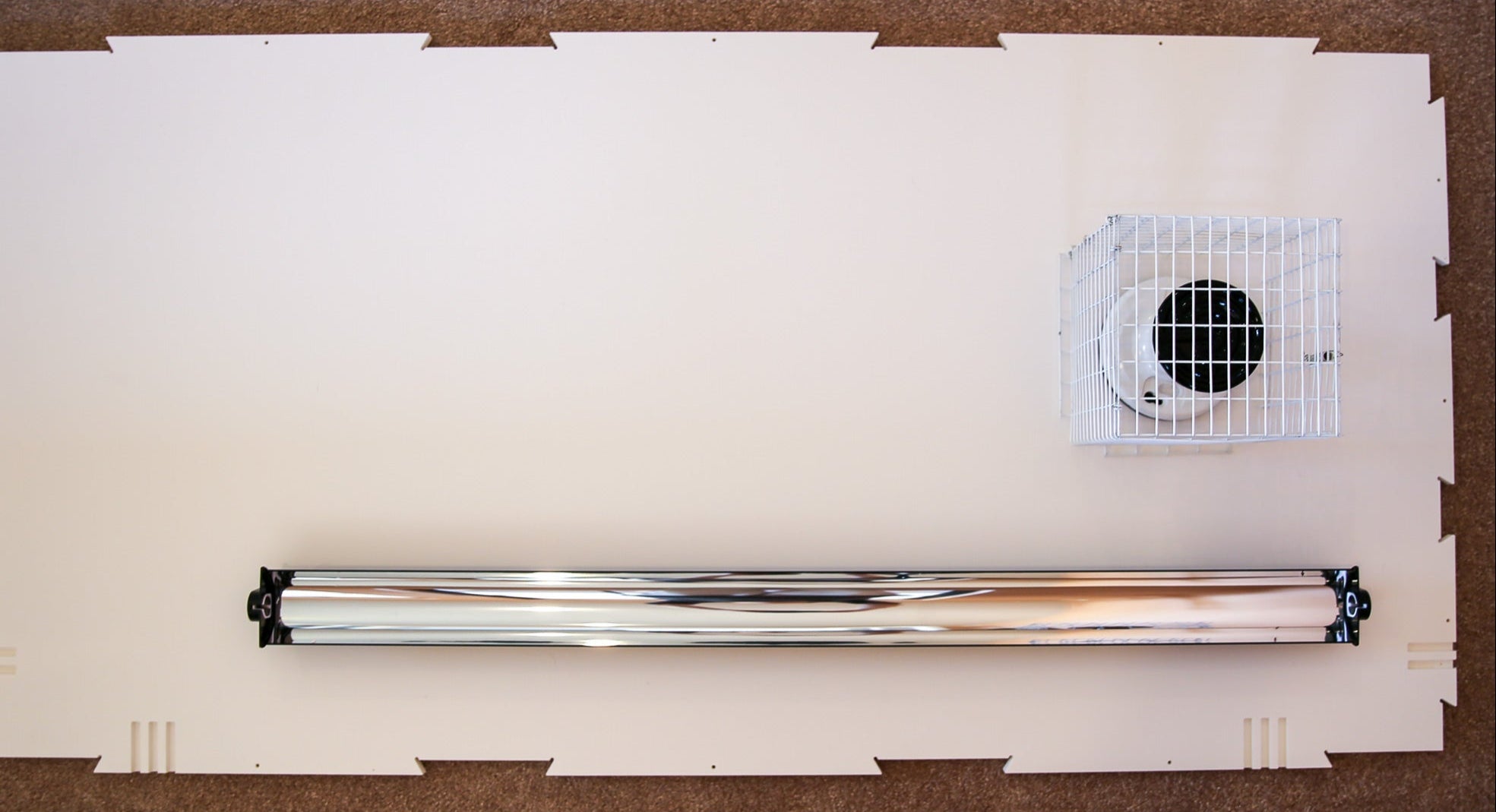
Option 2 - Radiant Heat Panel & UVB Bar
Ideal for warm ambient temperatures on one side, use with heat absorbing materials like rocks and wood to create mild basking spots. For best and safest results, use with a Pulse Proportional Thermostat.

Solid Enclosure Top - Heating
-
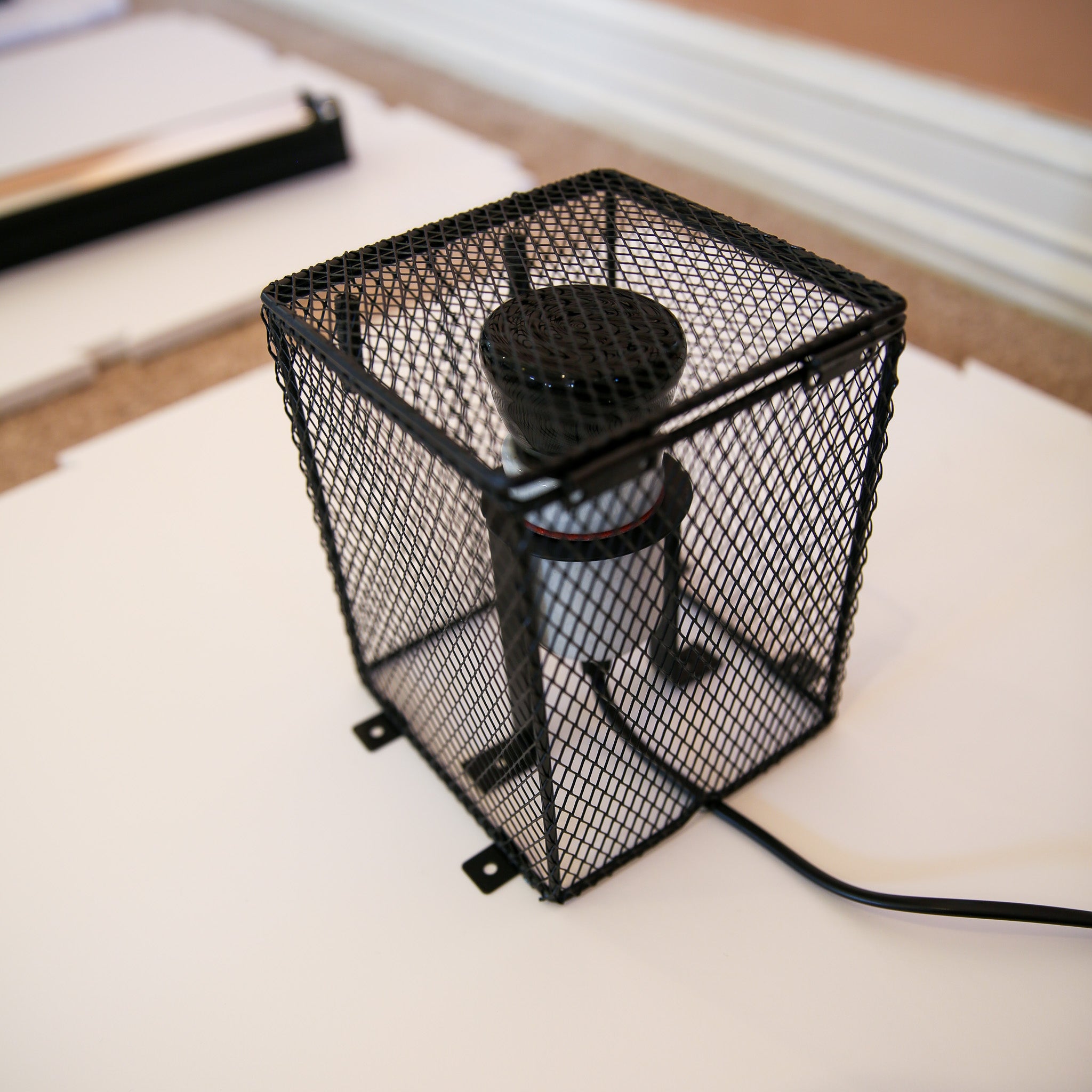
Ceramic fixture in metal bracket
Screw directly into the lid and use the bulb that matches your enclosure size and heating needs.
-
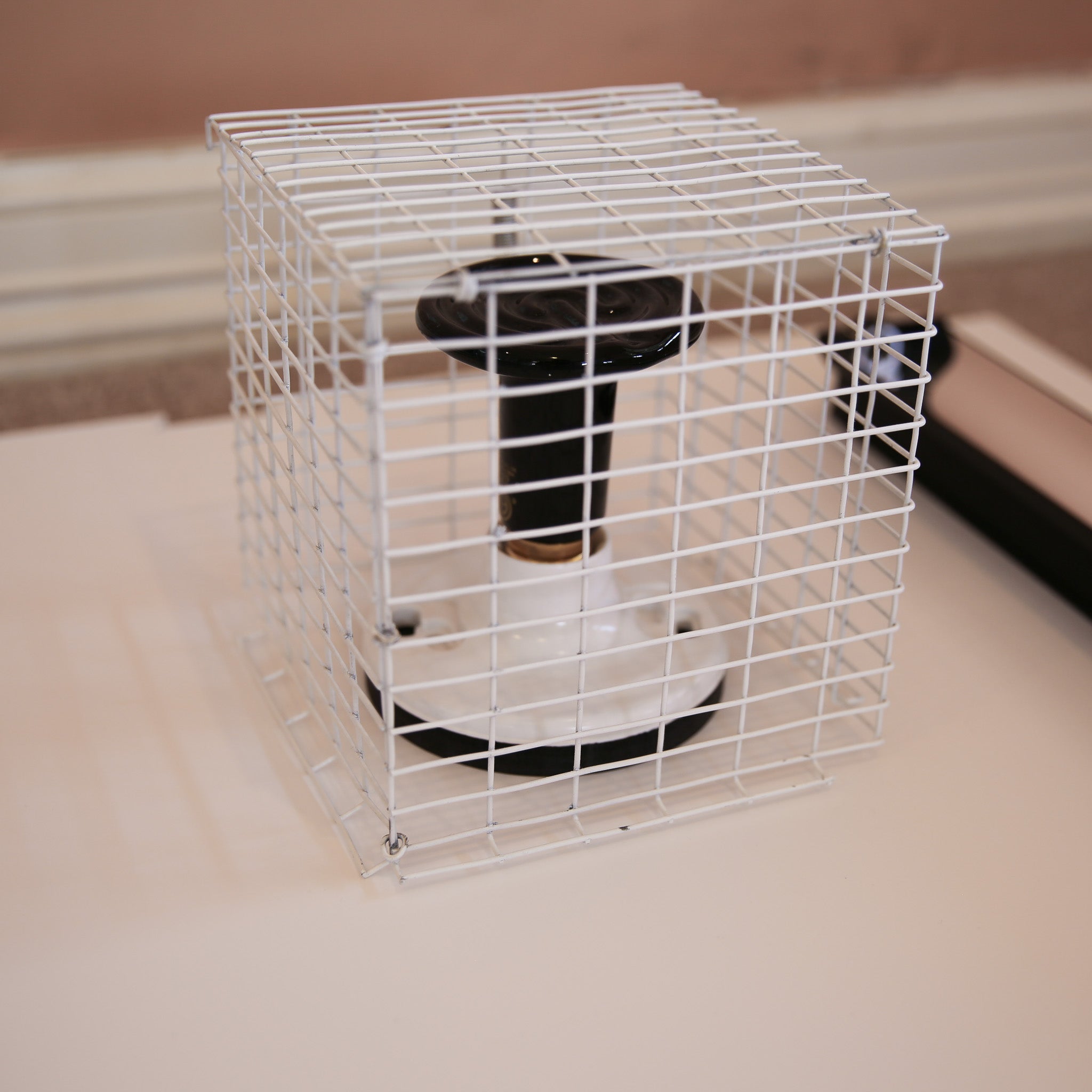
Flat ceramic fixture
Screws directly into the lid, with a PVC spacer in between the fixture and the lid.
Other Tips
-

Built in wire pockets
Easy wire control with an Apex enclosure lid with convenient exit pockets located on every side.
-
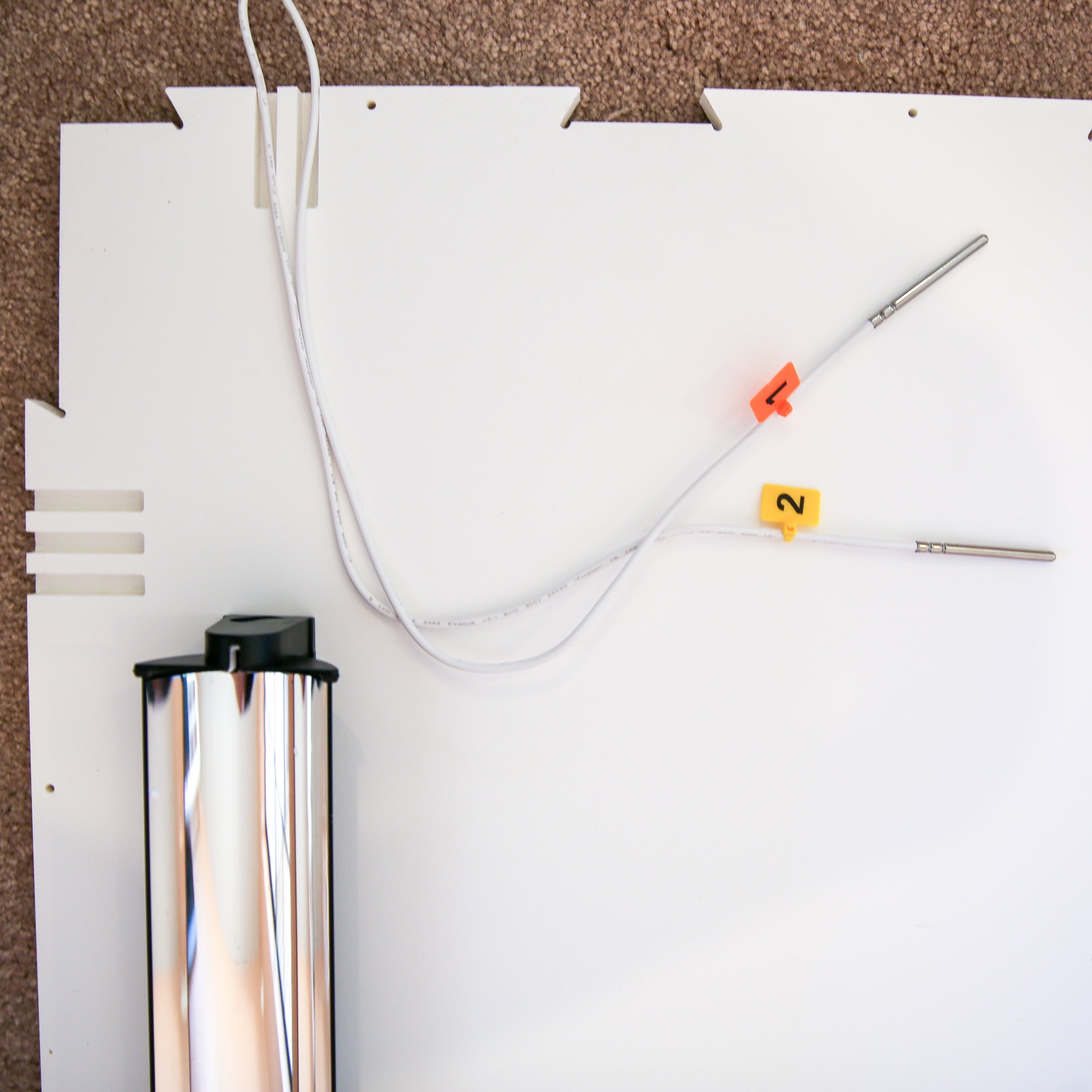
Always use a thermostat
Whenever you're using a heating element, no matter how low the power is, use a thermostat!
Screen Top Heating & Lighting
With a screen top, you can place the fixtures directly onto the screen or have them hanging over the enclosure on an appropriate stand.
- Place fixtures directly on top of screen
- Use domes to reflect the heat downward
- Apex Reptile screens are strong & efficient with about 80% pass through!
- Half screen or full screen option available for more or less air flow
- Build the warm side up in height so your reptile can regulate temperature
Screen Enclosure Top
-
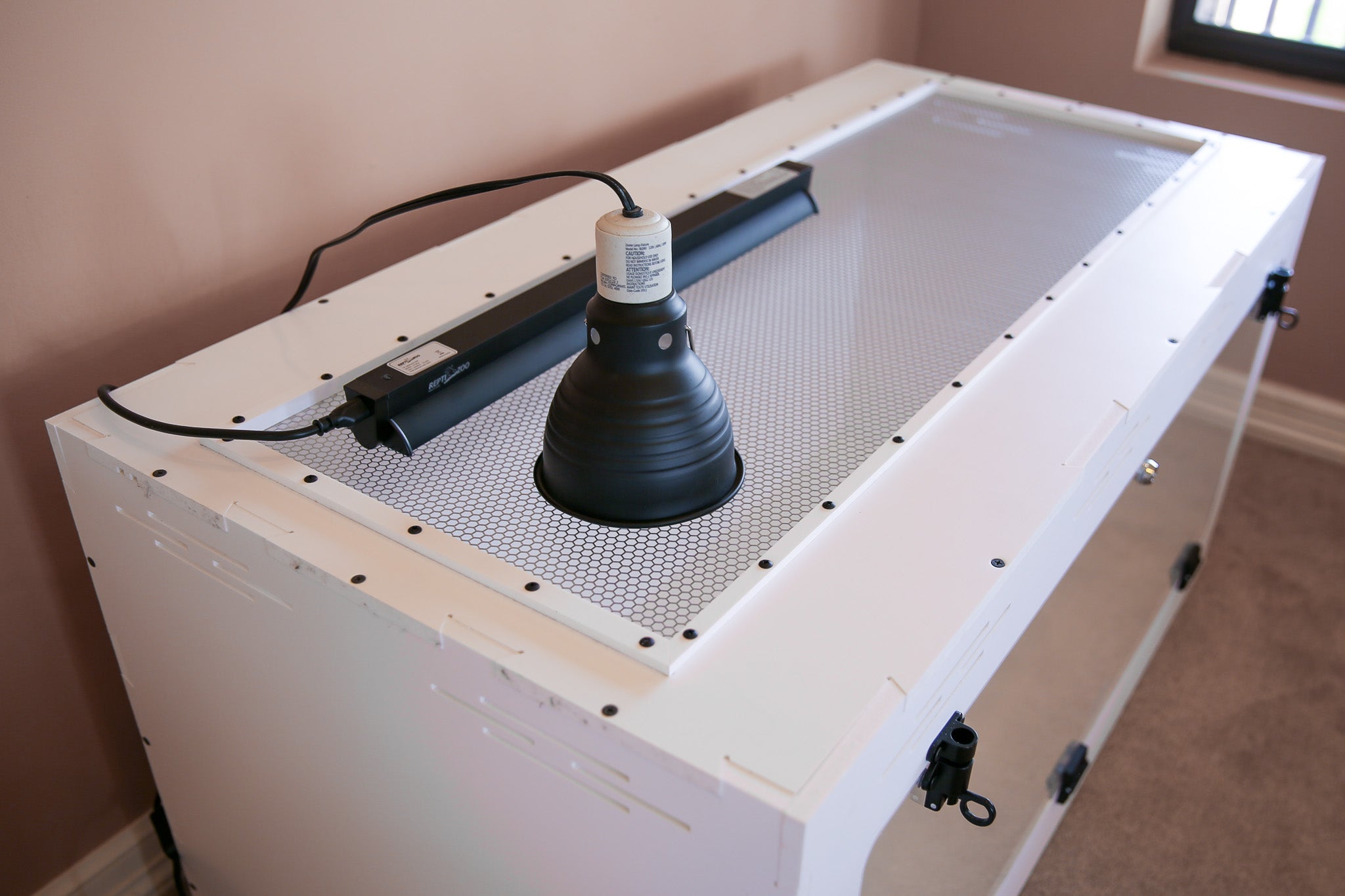
Domes & UVB bars can go onto screen
Choose the appropriate size dome for the bulb and amount of heat you need.
-
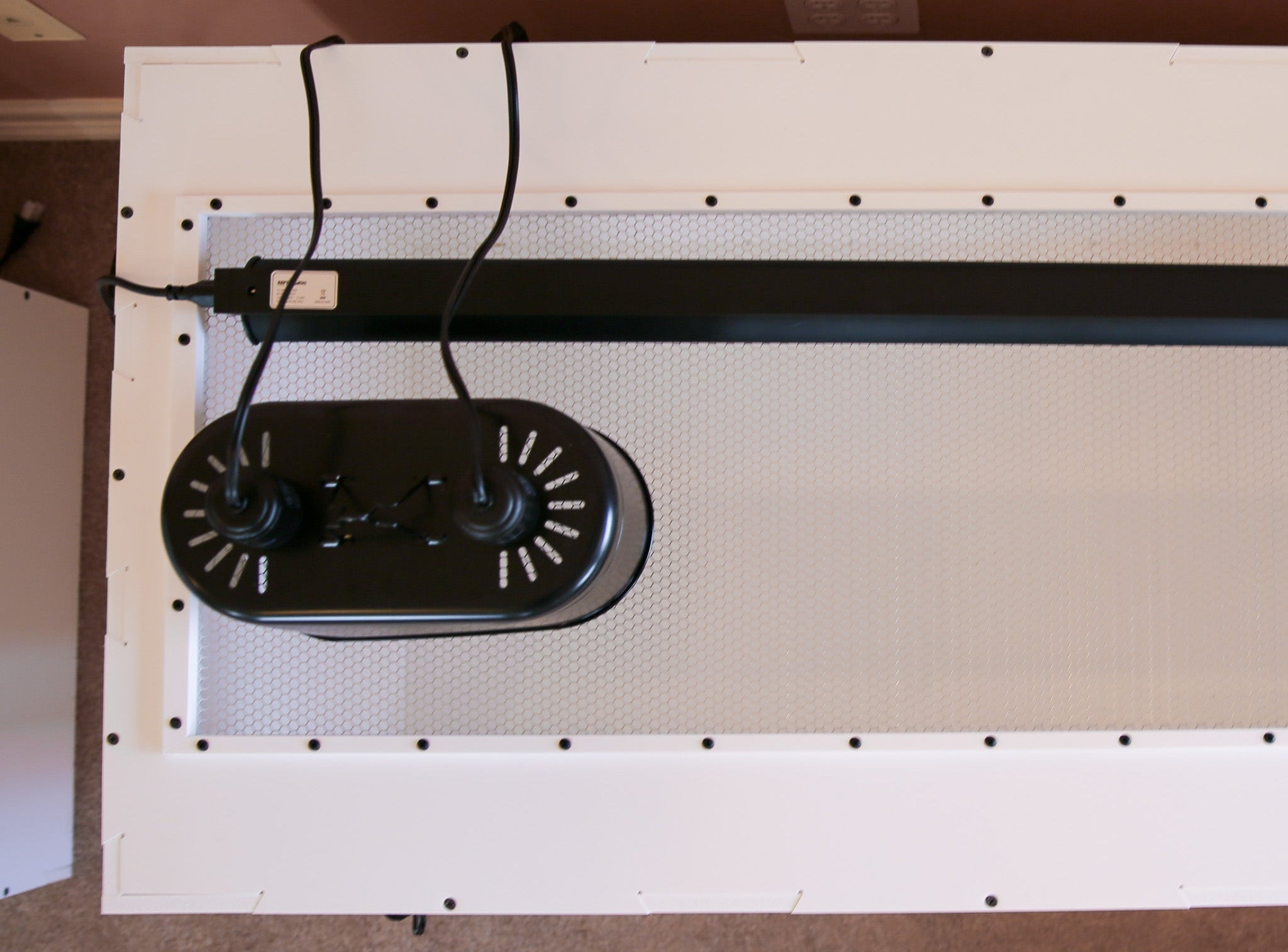
Two socket domes
Double bulb domes can be super useful. You can use two smaller bulbs, spread the temperature out more and cool down at night by turning one off.
Final Tips:
- Don't use under tank heating with a PVC enclosure. These were created for glass, which conducts heat well. PVC is insulating and works really hard to block heat from passing through.
- Always use a thermostat, no matter how low the power or heat is being emitted.
- Build the warm side up in height so your reptile can regulate their temperature. This also makes it easier to get one side cooler than the other. When the heat source is too far from the environment, it will end up working too hard and heating up the whole enclosure.
- Cage heat bulbs inside the enclosure to prevent animals touching them.
- Test temperatures regularly with a laser temperature thermometer and with temperature gauges set up inside the enclosure.
Shop Now
-
4'x2'x2' - Single Swing Down - NOVA
Regular price From $599.00 USDRegular price -
4'x2'x2' - Double Swing Out - NOVA
Regular price From $599.00 USDRegular price -
3'x2'x2' - Swing Down - ION
Regular price From $499.00 USDRegular price -
2'x2'x2' - Swing Out - ALTA
Regular price From $339.00 USDRegular price -
6'x2'x2' - Classic Swing Down - ION + ION
Regular price From $899.00 USDRegular price








